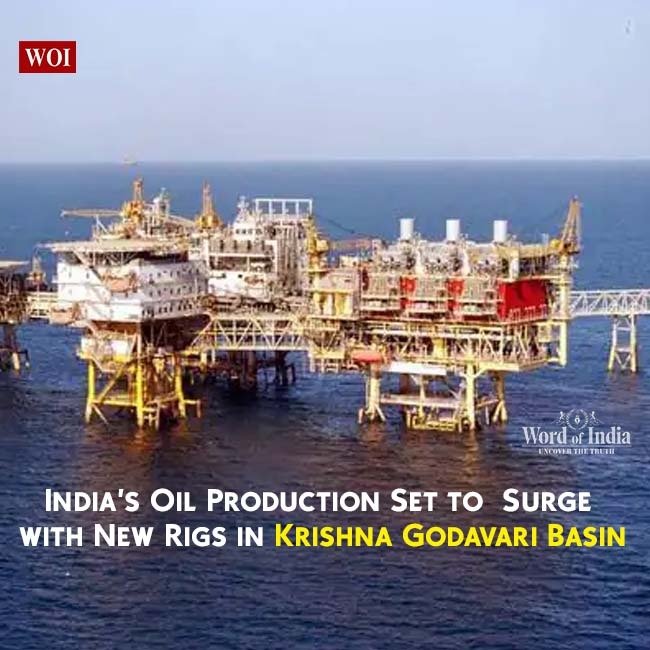BY shashank Pasupuleti
India recently made a milestone Union Minister for Petroleum and Natural Gas Hardeep Singh Puri announced the commencement of oil production from the deep sea project located 30 km off the coast of Kakinada in Andhra Pradesh on January 7, 2024. The development is part of a massive project with 26,000 wells the fourth round phase is currently underway. in its oil and gas industry with the discovery of new fields in the Krishna Godavari basin.
The project’s production is , reaching around 45,000 barrels per day by mid-2024. This increase in production is poised to contribute 7% to India’s total crude oil and gas production.
The first oil well was drilled near Digboi in Assam 1889. Known as “Oil well no.1” or “Discovery”, the well began producing oil in the country. The discovery and subsequent discovery of water wells in this area played an important role in the early development of the Indian oil industry, organizations like the Assam Railway Trading Company played an important role in this exploration and operation they replace equipment . . . .
Despite the high risk of the industry, with hazardous conditions and physically demanding tasks, the oil and gas industry is an important and growing industry, constantly evolving to adapt to new technologies and safety standards meet to reduce risk
Onshore Rigs: These are used for onshore drilling operations and can vary from simple mobile rigs to comfortable, fully equipped pink structures
Offshore Rigs: Designed for offshore drilling, these include: – Jack-up rigs: These have extendable legs that can be lowered overboard, raising the platform above the water. – Semi-submersible rigs: Floating rigs that are anchored or dynamically positioned for stability. – drillships: equipped for exploratory drilling, especially in deep water.
R.N. Srinivasan: Chennai’s Native Son Innovating in Oil Rigs and Championing Social Work
R.N. Srinivasan, hailing from Chennai, has made significant strides in the oil rig industry and as a social worker. Known for enhancing operational efficiency and safety in oil rigs across India, Dubai, and internationally, his innovations have set new benchmarks in the industry. Shifting gears, Srinivasan has also dedicated himself to social work, applying his diverse skills to improve community lives. His journey from Chennai to becoming a key figure in oil rig innovation and social welfare exemplifies his multifaceted talent and commitment to positive change.
Components of a Rig: A common drilling rig consists of
→ Derrick or Mast: A tall tower that supports the drilling equipment.
→ Drill String: A pipe that extends down into the well bore.
→ Drill Bit: The device that actually breaks and removes the rock.
→ Blowout Preventer (BOP): A safety device that can seal the well in case of uncontrolled pressure.
→ Mud System: Pumps drilling fluid (“mud”) to cool the drill bit and carry the rock cuttings to the surface.
→ Power System: Engines or generators to power the drilling operation
Working on these rigs is recognized as one of the most dangerous jobs in the world due to inherent hazards and harsh conditions These hazards include handling explosives under high pressure, operating heavy machinery, working in extremely remote areas, physically demanding work, working at heights or in confined spaces Safety training follows completeness and use of specialized equipment is of utmost importance.


